Family : Chaenopsidae

Text © Giuseppe Mazza

English translation by Mario Beltramini
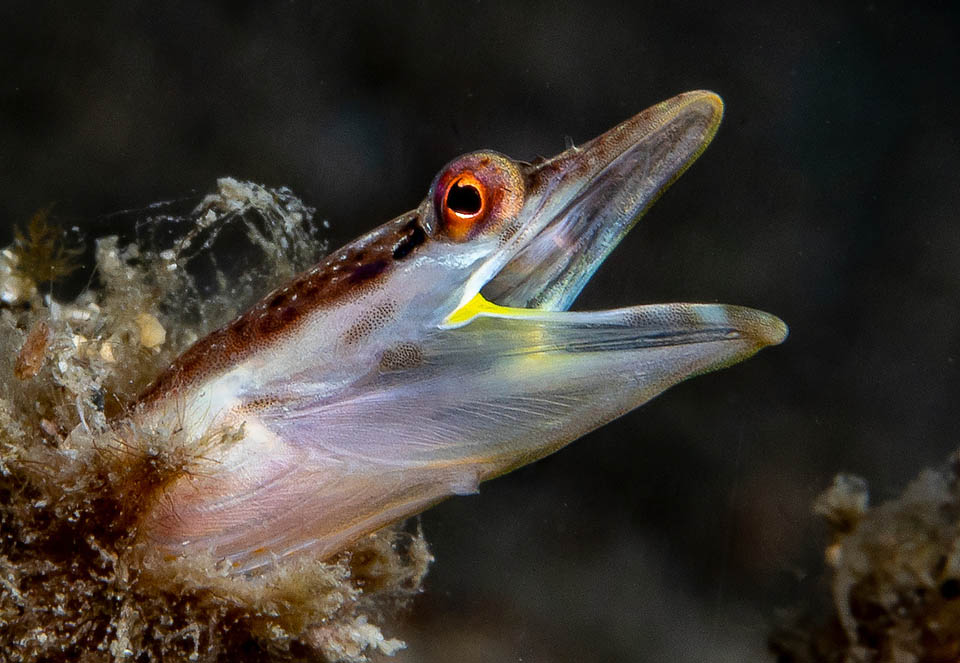
Chaenopsis limbaughi is a tropical North Atlantic fish. The two main populations stand in south-western and north-western Caribbean © Allison & Carlos Estape
Chaenopsis limbaughi Robins & Randall, 1965, known as Yellowface pikeblenny, belongs to the class of the Actinopterygii, the ray finned fish, to the order of the Blenniiformes and to the family of the Chaenopsidae that counts 14 genera and about one hundred of American species with the compressed body, elongated and at times anguilliform as is the case in the genus Chaenopsis.
They are small-sized fish that do not exceed 16 cm and often live in pipes abandoned by invertebrates, feeding mostly on small crustaceans.
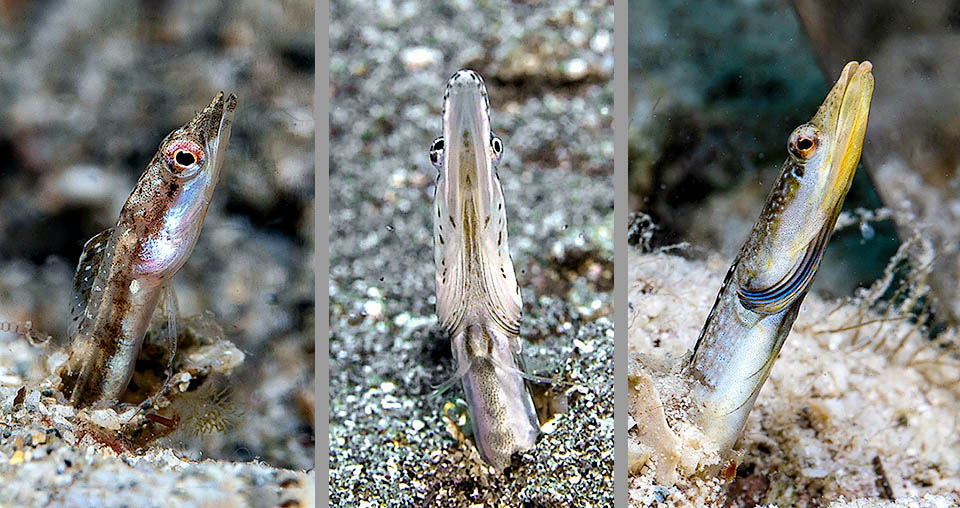
Even 8,5 cm long, they live in individual tube burrows stolen from annelids and other benthic invertebrates. To note the inverted U profile of the head seen ventrally © Allison & Carlos Estape
The name of the genus Chaenopsis, created by Gill in 1865, originates from the Greek “chaeno”, to yawn, and “opsis”, appearance, due to the mouth they open wide, like a yawning, during the frequent disputes in defense of their hole.
Conversely, the specific term limbaughi honours the memory of Conrad Limbaugh (1925-1960), zoologist and underwater photographer, friend of the Author, who tragically died in the labyrinth of an underground French river.
Zoogeography
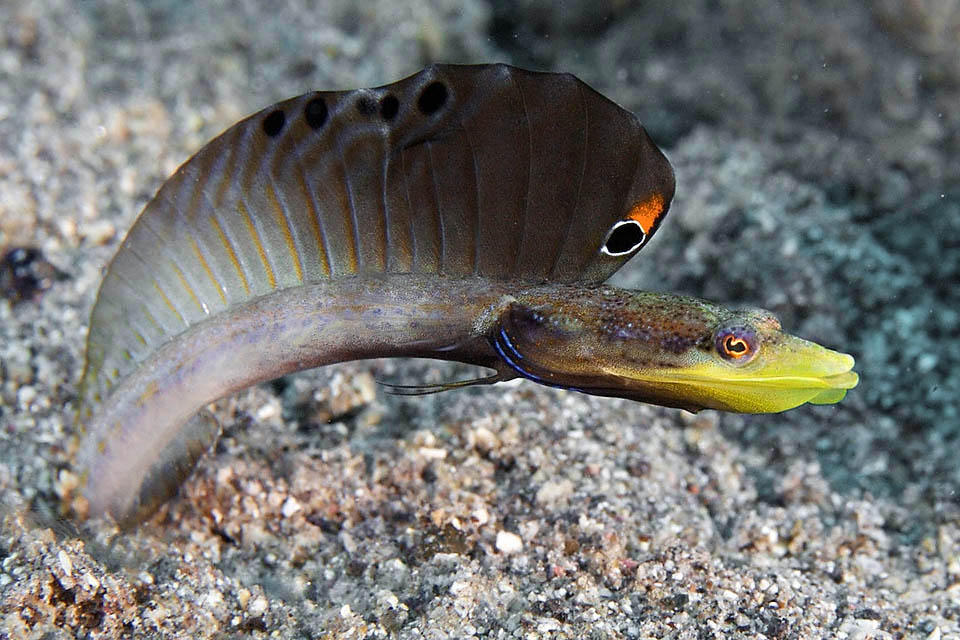
The males have a big dorsal fin with a black ocellus white surrounded on the membrane between the two first spiny rays, followed by a showy orange red spot © Allison & Carlos Estape
Chaenopsis limbaughi is a fish of the Caribbean area, present from Florida and Bahamas to Cuba, Cayman Islands, Puerto Rico, Virgin Islands and Lesser Antilles up to Venezuela and Colombia and then Panama and Costa Rica up to Belize. But the two main populations are located in the south-western and in the north-western Caribbean.
Ecology-Habitat
The Yellowface pikeblenny lives in clear waters from 3 and 22 m of depth, but is usually found at around 10 m deep.
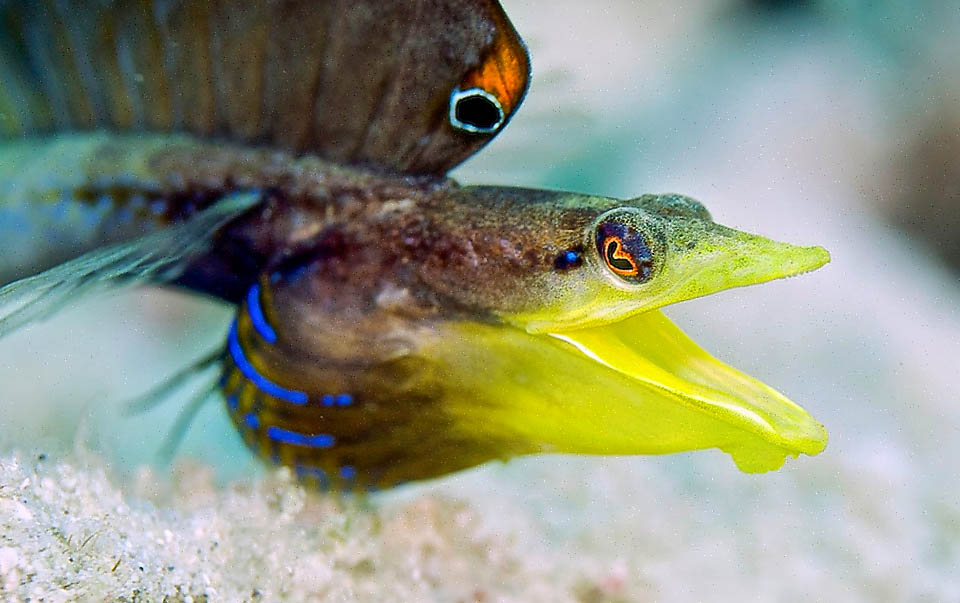
Moreover the head is yellow and elongated, hence the name of Yellowface pikeblenny, and the typical blue rays on the throat membrane © Allison & Carlos Estape
It forms small schools ofen living side by side in the individual tube dens, stolen from annelids on calcareous or detrital bottoms or from other benthic invertebrates.
Morphophysiology
Chaenopsis limbaughi may reach the length of 8,5 cm. The head, long and flat, without tendrils, seen from above or ventrally, presents a typical upside down U profile.
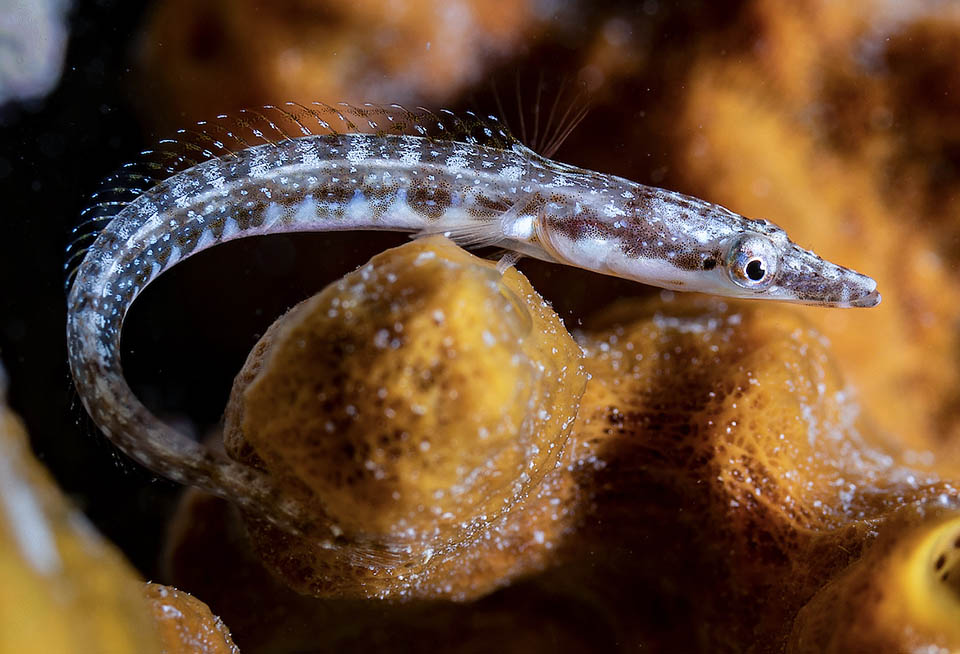
The females have a more modest livery with a horizontal line on the sides and dark vertical bars forming saddles on the back © Allison & Carlos Estape
The lower jaw is protruding, and the join of the mouth stands very far back from the level of the eye.
The body is scaleless, the lateral line is absent and the fins do not display ramified rays.
The long dorsal fin has 18-21 spiny rays and 31-36 soft ones; the dorsal fin counts 2 spiny rays and 33-37 unarmed, and similarly soft are the 2-3 rays of the pelvic and the 12-13 of the pectorals.
The caudal, rounded, touches the end of the dorsal fin and of the anal.
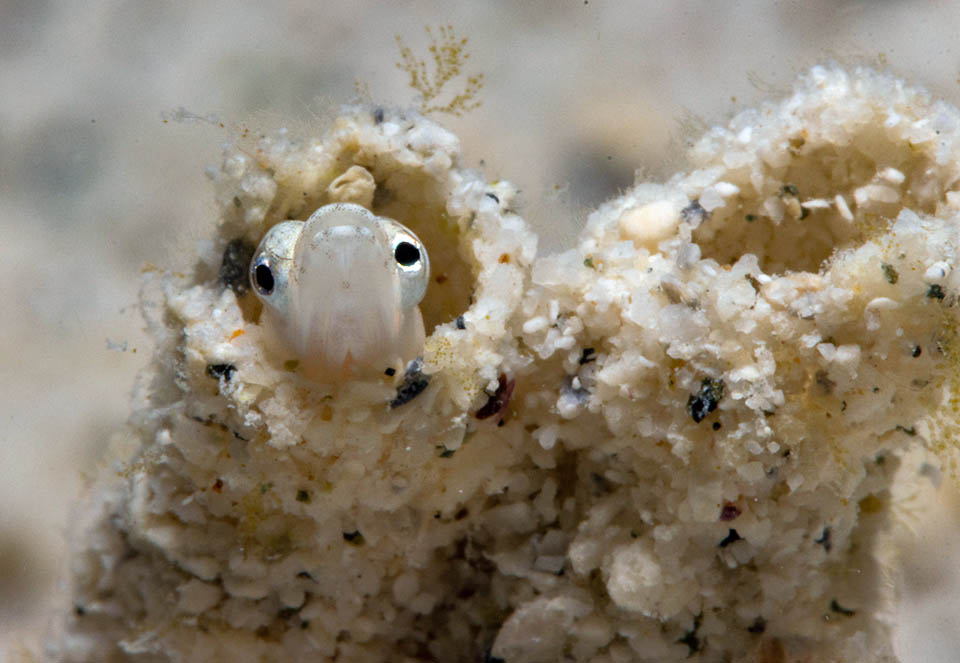
Juvenile peeking out from an annelid abandoned burrow. Chaenopsis limbaughi feeds on small crustaceans, worms and small fish it hunts in ambush or nearby © Allison & Carlos Estape
In the adults we note a marked sexual dimorphism.
The males, besides the fore part of the yellow head, in fact have characteristic blue rays on the membrane of the throat and especially a dorsal fin decidedly higher, with black ocellus surrounded by white on the membrane between the first two spiny rays, followed above by a showy orange spot.
Overall the body is greenish brown more or less pale with dark ocelli in the higher part of the dorsal fin.
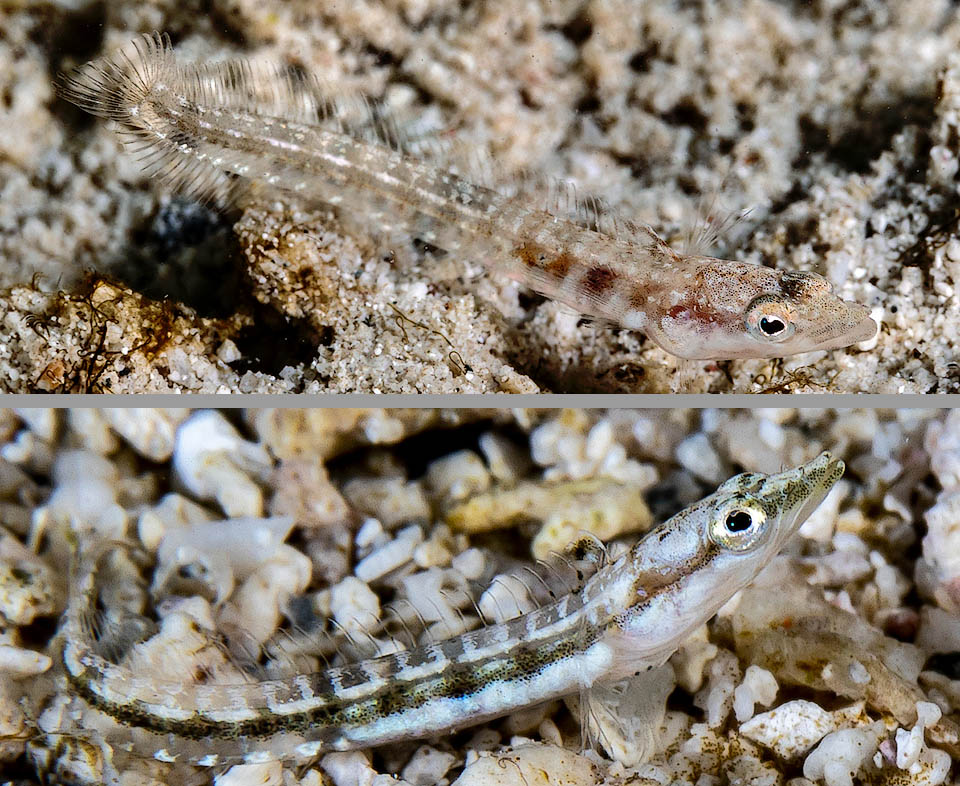
Here two phases of juvenile livery with features recalling, growing, the female one © Allison & Carlos Estape
The females have a smaller snout and a greyish brown livery with a horizontal line on the sides and vertical dark bars forming saddles on the back.
In both sexes the iris tends to pinkish and the juveniles are similar to the females.
Ethology-Reproductive Biology
The Yellowface pikeblenny feeds on small crustaceans, worms and small fish without going too far from the den.
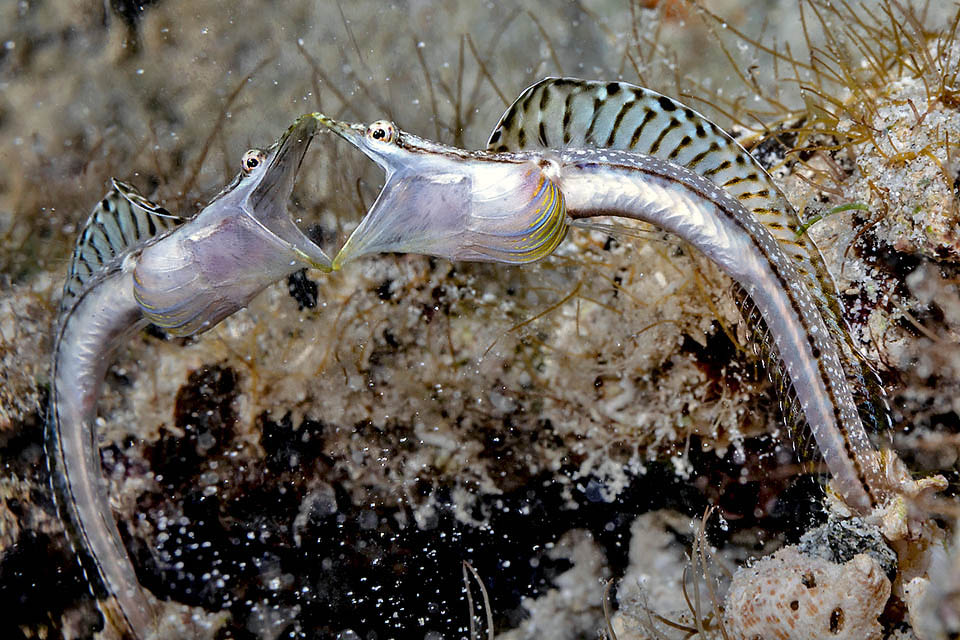
Here two young males, neighbours, argue mouth wide open. Little is known about the Chaenopsis limbaughi reproduction but by sure it is not an endangered species © Allison & Carlos Estape
Not much is known about the population’s trends, the resilience and the reproduction modalities of this species, but it is thought that the eggs are laid in the burrows.
Even if it is sometimes proposed as an aquarium fish, where however it has never reproduced, the fishing vulnerability of Chaenopsis limbaughi is very low and marks only 10 on a scale of 100.
Hence from 2007 it appears as “LC, Least Concern”, in the IUCN Red List of the endangered species.
→ For general information about FISH please click here.
→ For general information about BONY FISH please click here
→ For general information about CARTILAGINOUS FISH please click here.
→ To appreciate the BIODIVERSITY of BONY FISH please click here.
→ To appreciate the BIODIVERSITY of CARTILAGINOUS FISH please click here.
